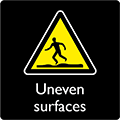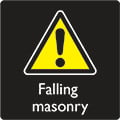Free Entry
Open any reasonable time during daylight hours
Address:
Castle Close, Weeting, Norfolk, IP27 0RQ
Weeting Castle is a rare surviving example of a grand 12th-century manor house, which despite its name was never fortified. The moat, added in the mid 13th century, was built to demonstrate the wealth and power of the castle’s owners.
Read more about the history of Weeting Castle.
During 2023–4 English Heritage conserved the ruins, making them safe for visitors to enter. The repairs significantly changed the building’s internal appearance: you can see new stonework, both in flint and cut stone, holding up the historic masonry. Where possible, we’ve designed these new supports to show the historic form of arches and piers, which had become difficult to see and understand.
Before You Go




Parking: There is a small lay-by next to the castle entrance and just in front of the village church.
Access: There are a four steps up to the path to the castle entrance from the lay-by, and then two kissing gates on the path to the ruins.
Facilities: There are no facilities at the castle but it is on the edge Weeting village so there are shops and places to eat nearby.
Dogs: Dogs on leads are welcome.
Please be aware: There is moat that fills with water in winter and dries out over the summer.
Drone flying: Please see our Drone guidance
Plan a Great Day Out
Why not travel on to the fascinating Grime's Graves, four miles to the northeast and the only Neolithic flint mine open to visitors in Britain?
Or eight miles to the southeast of the castle is the town of Thetford where you can visit Thetford Priory, the burial site of the earls and dukes of Norfolk for nearly 400 years. And then half a mile from the priory is the Church of the Holy Sepulchre, the only surviving priory of the Canons of the Holy Sepulchre in England.the priory is the Church of the Holy Sepulchre, the only surviving remains of a priory of the Canons of the Holy Sepulchre in England.
Your Places Appeal
Did you know over 300 of our historic sites are free to explore and enjoy, but keeping them open and cared for costs more than £4.2 million every year?
With your help, we can protect these historic places and make sure they can be enjoyed for generations to come.
Whether your donation today helps pay for the work of an expert stonemason, a key keeper’s time to unlock the gates or the restoration of a rare artefact, you’ll help care for precious heritage.
Donate today